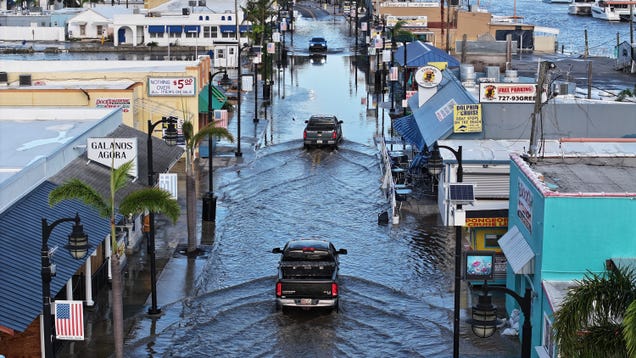Understanding the Impact of Hurricane Helene: A Deep Dive into the Aftermath
The recent landfall of Hurricane Helene has left a significant mark on the southeastern United States, particularly in Florida and North Carolina. With winds reaching Category 4 strength, the storm has not only claimed lives but has also caused extensive property damage, including the destruction of vehicles and infrastructure. This article explores the multifaceted impact of Hurricane Helene, addressing key concerns and providing insights into recovery efforts and safety measures.
Assessing the Human Cost of Hurricane Helene
As of the latest reports, Hurricane Helene has tragically resulted in the loss of at least 128 lives. This grim statistic underscores the storm’s severity and the urgent need for effective disaster response strategies. In the aftermath, communities are grappling with grief and loss, highlighting the importance of mental health support in recovery efforts. Organizations such as the American Red Cross and local mental health services are mobilizing to provide counseling and support to those affected.
The storm’s impact is not limited to immediate casualties; it also disrupts the social fabric of communities. Families are displaced, and local economies suffer due to business closures and infrastructure damage. A comprehensive approach to recovery must address both physical rebuilding and emotional healing, ensuring that communities can emerge stronger and more resilient.
Analyzing the Physical Damage: Infrastructure and Vehicles
Hurricane Helene has wreaked havoc on infrastructure, particularly in coastal areas. Reports indicate that over 672 vehicles were destroyed in a single location in Florida, illustrating the storm’s capacity to devastate property. The destruction of cars not only affects individual owners but also has broader implications for local economies reliant on transportation for commerce and daily activities.
In addition to vehicles, critical infrastructure such as roads, bridges, and utilities has been severely impacted. The Federal Emergency Management Agency (FEMA) has been deployed to assess damage and coordinate recovery efforts. Their role is vital in ensuring that federal resources are allocated effectively to support rebuilding efforts. Recent studies suggest that timely federal assistance can significantly reduce recovery times and help communities return to normalcy more swiftly.
Exploring the Environmental Consequences
Beyond human and physical damage, Hurricane Helene poses significant environmental challenges. The storm’s heavy rainfall and flooding can lead to long-term ecological impacts, including soil erosion, water contamination, and habitat destruction. The aftermath of such storms often reveals the vulnerability of coastal ecosystems, which are critical for biodiversity and local fisheries.
Experts emphasize the need for sustainable recovery practices that prioritize environmental restoration. Initiatives such as wetland restoration and improved stormwater management can mitigate future flooding risks and enhance ecosystem resilience. By integrating environmental considerations into recovery efforts, communities can better prepare for future storms and protect their natural resources.
Preparing for Future Storms: Lessons Learned
The devastation caused by Hurricane Helene serves as a stark reminder of the increasing frequency and intensity of hurricanes due to climate change. As communities reflect on their experiences, it is crucial to implement lessons learned into future preparedness plans. This includes investing in robust infrastructure, enhancing early warning systems, and promoting community education on disaster preparedness.
Local governments and organizations are encouraged to engage in comprehensive planning that incorporates climate resilience strategies. For instance, building codes can be updated to ensure structures withstand extreme weather, and community drills can be conducted to familiarize residents with evacuation routes and safety protocols.
The Role of Community in Recovery Efforts
Community solidarity plays a pivotal role in recovery from natural disasters. Grassroots organizations and local volunteers often lead the charge in providing immediate assistance, from food and shelter to emotional support. The power of community resilience cannot be underestimated; it fosters a sense of belonging and shared purpose that is essential for healing.
Case studies from previous hurricanes illustrate the effectiveness of community-led initiatives. For example, after Hurricane Katrina, local groups mobilized to provide aid and rebuild neighborhoods, demonstrating that collective action can significantly enhance recovery efforts. Encouraging community engagement in disaster preparedness and response can create a culture of resilience that benefits all.
In summary, Hurricane Helene has left a profound impact on the southeastern United States, affecting lives, property, and the environment. As recovery efforts unfold, it is essential to prioritize not only physical rebuilding but also emotional and community resilience. By learning from this experience and implementing proactive measures, communities can better prepare for future storms and emerge stronger in the face of adversity.

